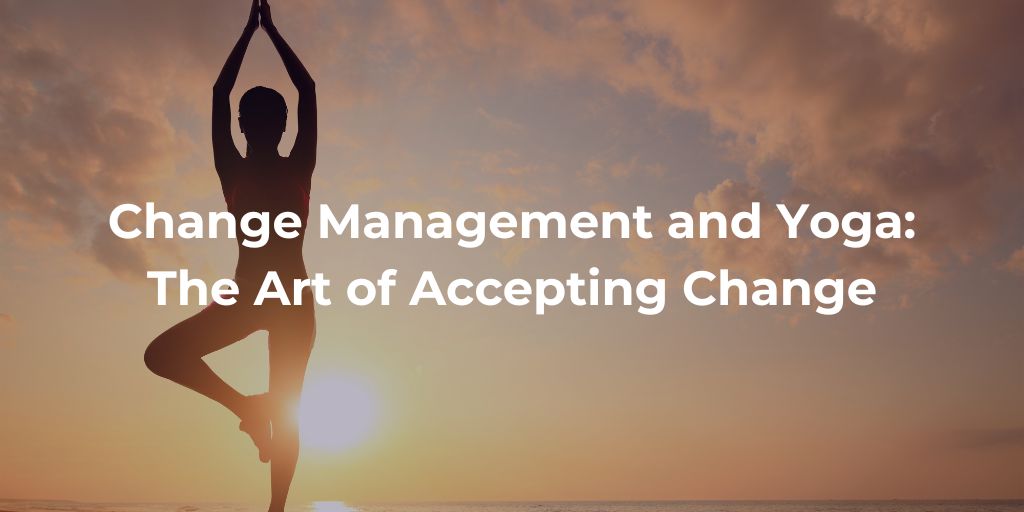What do change management and yoga have in common? Try reading these three sentences thinking first about change management, then about yoga:
- Everyone knows that it is useful and beneficial, but very often “there is no time”
- It is a discipline that is “useful but not within my reach”
- It is a complex and articulated path that has a strong impact on people’s habits
According to the results of Assochange’s annual report*, the approach to change management in Italy began to evolve faster in 2020, especially following the pandemic. The need to implement new organisational models and working tools has grown, as has the awareness of the importance of change management.
Yoga has also seen a considerable growth in popularity in recent years, especially since 2020, when it became a personal approach to change for many people during the pandemic.
Change management, yoga and the human side
Unlike other job functions, change management is not always the responsibility of a team within an organisation. It is often assigned to the human resources department. Of course, in larger and more structured organisations, the function may be formally assigned to a specific change management office. Or secondly, it is assigned to the project management office.
What happens quite often is that HR professionals do not have a clear and defined role in a change initiative, despite the fact that they are the ‘experts on the human side’.
But why do we stress the human side of change so much? Because successful change comes from resources and goes beyond technical skills.
Successful change has to be managed across the board and has to involve resources that accept and promote it. The goal of change management is to convince and support the team to face the change, to accept it and turn it into a successful business initiative.
This human side we have been talking about for change management, is also one of the success factors of yoga in the modern Western world.
The word yoga comes from the root yui, which in Sanskrit means ‘to bind’, often translated as ‘union’. It is precisely this union of mind and body that makes it different. Yoga is a holistic discipline, which considers the body (which in our metaphor could be the technical skills) always in combination with the mind. It is the focus on the human side that makes the difference, because those who practise yoga also bring their attention inwards. The centre of everything is the practising individual, not the result of a particular posture.
Embracing Change
In English, the expression ‘embrace change‘ is used. In other words, transforming something that we initially think of passively undergoing into something that becomes part of our reality; challenging the status quo, welcoming (and why not, even embracing!) change.
These phrases can be read both when thinking about both our professional and personal lives.
During the practice of yoga, you enter a position (asana), you breathe and remain present in order to welcome the physical change. And what happens? The body relaxes and opens, naturally and at the right time. We breathe and remain in the position, creating something of our own. We generate the energy to be able to realise the change, in our body and mind.
What in yoga are called asanas, positions, can be compared to the training and practice of learning to work with change. In both cases it is about applying knowledge, tools and resources to be able to deal with change. And being able to maintain momentum, the impetus for continuous change.
Developing Your Skills
Here are some important skills in change management and yoga practice:
- Practising listening
- Developing greater empathy
- Choosing your words carefully (not only with others, but also with yourself
- Staying motivated even when facing resistance
- Developing resilience and the ability not to get discouraged when things go wrong
Not only leaders but all teams must increasingly develop skills to adapt and respond in a healthy way to all stress factors and challenges in business, to all changes. After embracing change it is easier to plan and continue with the steps that take us in the direction we want to go.
And, in order to keep the culture of change alive, it becomes increasingly important for an organisation to create a culture in which people feel safe to experiment and are willing to devote time to innovation.
If yoga is change at its best, change management is the business/work parallel.
Embracing change is an art that can cost time and is difficult to learn. But it is worth it.
If you are interested in learning more about this topic, read our interview with Guy Ballantine CEO and Board Adviser on “Embracing Change for Company Growth”.
Sources: APMG, Quick guide to the basics of Change Management
* Assochange, Osservatorio sul Change Management in Italia








